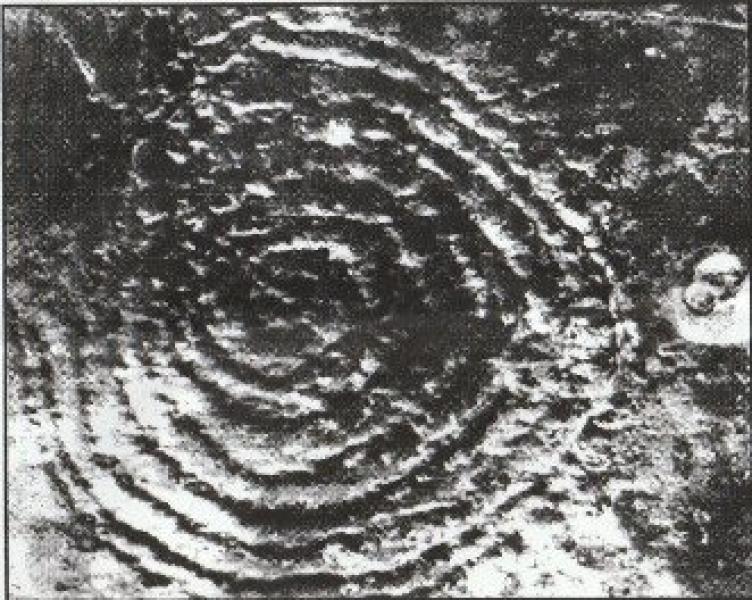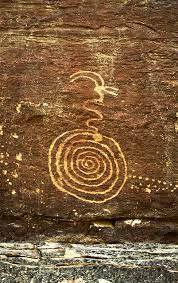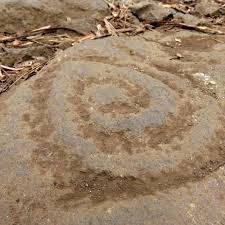
Ohio River
Buzzard Roost, Indiana
Stephen Saalman
There is an ancient Indian spiral petroglyph on the Indiana side along the river at Buzzard Roost. The petroglyph is in the form of a spiral snake carved into stone, and river floods have eroded some of it over the hundreds and possibly thousands of years since it was carved.
The fascinating thing about the spiral petroglyph is that it appears in other places in the United States. One in a desert canyon in New Mexico which dates back several thousand years was apparently used as some type of calendar.
On June 21st and again 6 months later each year for 18 minutes the sun shines in a small straight line across the carving forming what appears to be a dagger of light. It only happens on the equinoxs.
The light is focused upon the carving by several large stones which appear to serve as a sort of prism. The Southern Indiana carving has no such prism, however if one ever existed it could have been washed away by flooding.
The Mayan Indians also developed calendars based on the equinox and solstice. The large pyramid at Chichen Itza in Mexico's Yucatan was built so that a serpentine body of light slithers down a huge stairway to a stone serpent head at the bottom at sunset at the spring and autumn equinoxes.
How is it that all these ancient cultures carved into stone the exact same symbol in a time where there was no way to communicate with each other?
There are other petroglyphs along the Ohio, but the serpentine stone certainly needs further investigation by experts before it is destroyed, it could be a very significant historical find.


- Log in to post comments
